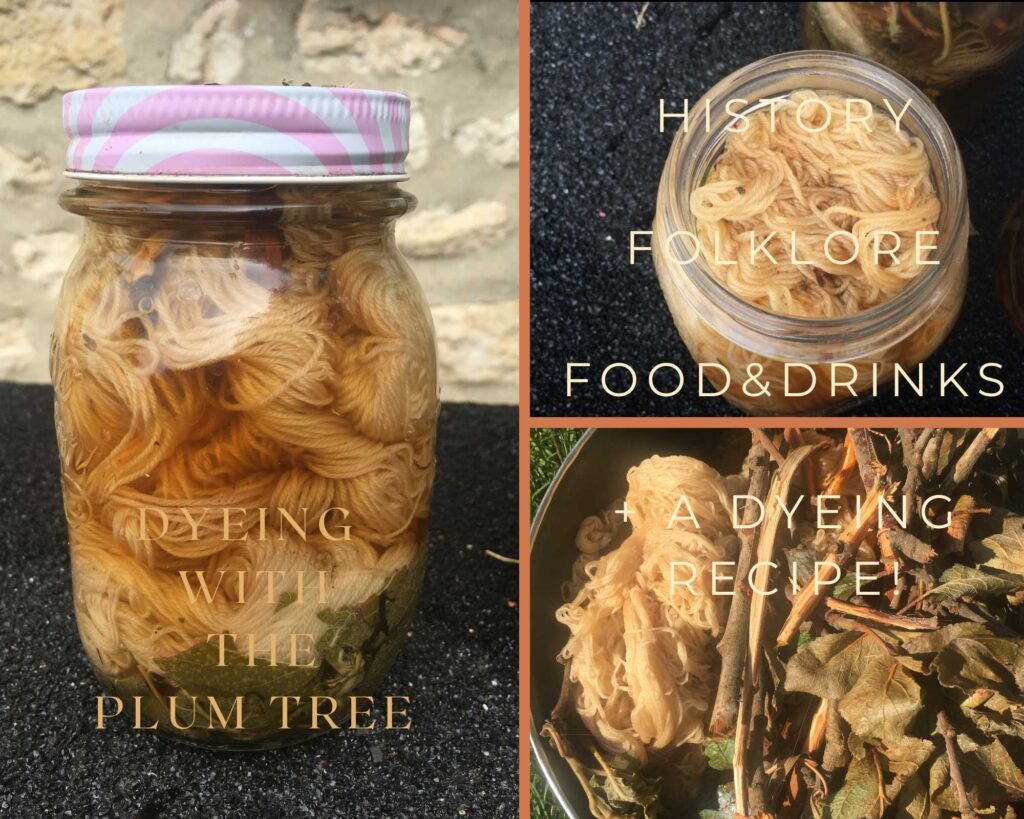
Today, let’s talk about the history, mythology, medicinal uses, food and of course natural dyeing around the plum tree. Yes, we are covering a lot of subjects and it’s going to be fun! If you enjoyed our previous blog posts about dyeing with the walnut tree and pomegranate and natural dyeing, start reading this new post in our Seasonal Dyeing collection!
Before diving into natural dyeing, let’s explore the history and myths around the plum tree
The uses of the Plum tree through history
Some botanical facts about the Plum Tree
The plum tree I use for natural dyeing is the European plum tree since we are based in Europe but it’s not the only type of plum trees of course. The Encyclopedia Britannica in its article about the plum tree also mentions the Japanese plum tree as another type of plum tree very popular for its fruits. Other species are grown just because they are pretty and there is nothing wrong with that. Shouldn’t we all aspire to be a flowers and leaves tree model of the botanical world?
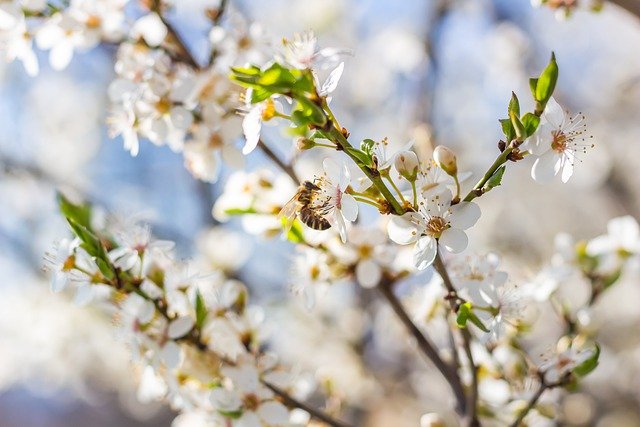
Yeah, history!
What we call the European plum tree have been cultivated for thousands of years, starting first in the Caucasus region. Another type of European plum tree, the Damson plum, was already mentioned around Damascus.
So how did these plums come to Europe?
They were either brought to Rome around 200 B.C when Rome was the place to be or carried all the way to France from Jerusalem at the time of the fifth crusade.
Let’s go back to Asia now and our Japanese plum tree.
It was cultivated first in China with mention of the plums found in Confucius’ writings before being travelling to Japan, where its popularity gave it its name.
The reputation of the plum tree has always been huge. Archaeologists found several stones belonging to varieties of plums while excavating sites from the Bronze Age but also in Egypt, where dried plums were found in tombs.
Plums became all the rage during the Renaissance in France with Claude de France, the first wife of François the 1st giving her name to a variety of plums gifted by the Sultan of the Ottoman Empire.
Plum tree used for natural dyeing around the world for centuries
Let’s make a stop to India first. India is of course famous for its beautiful colours used for dyeing. Among all the plants used for natural dyeing, we found mention of the black plums being a popular source of dye.
Back to Japan again now where the use of natural dyes was very popular before the Meiji period and the introduction of synthetic dyes.
We know that the plum tree bark was among these popular plants used for natural dyeing.
Dyers actually tasted the plum tree dye as a way to make sure the dye was strong enough, thanks to the tannins inside.The colour obtained from the plum tree was called umezome, meaning plum tree.
Plum blossoms, along with cherry blossoms, were also popular patterns used to embellish kimonos.
Mythology and Folklore around the plum tree
The plum tree and its fruits appear in several stories around the world. It’s not a surprise that a lot of these stories come from China and Japan.
The 7th century Chinese poet Zhao Shixiong dreamt of the Spirit of the Plum Tree during a pilgrimage and composed a poem about this lady appearing during a full moon. The plum tree blossoms are a symbol of perseverance and hope in China since they mark the transition between winter and spring. The Chinese mythology often depicts immortals eating these blossoms to gain more strength and vitality.
In Japan, the plum tree (called ume) is often planted at the northeast limit to protect against evil being, making the plum tree a protective charm.
But variations of a story involving the plum tree can also be found in Native Americans’ oral traditions. In it, a trickster often get tricked by the reflections of plums. Indeed, plums are shiny enough to offer a reflection and curvy enough that the reflection is always distorted.
A quick stop to explore the use of Plum Tree in food and medicinal uses
Medicinal use of the Plum Tree
As with most fruits, the fruits from the Plum Tree bring some health benefits too!
Both the fresh and dried plums are rich in fibres.
The dried plums have other benefits, making them great for joint health, high cholesterol, and blood pressure.
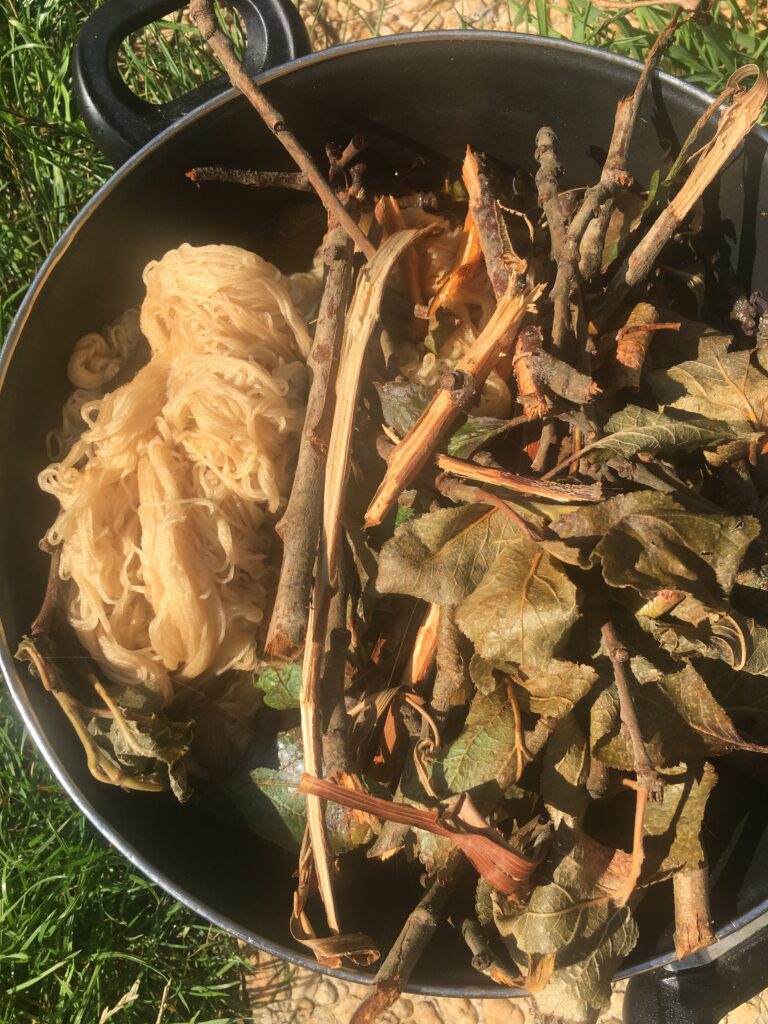
A couple delicious recipes to make with the Plum Tree
We are focusing primarily on the use of the plum tree for natural dyeing and how it has been cultivated for thousands of years but let’s not forget the plums are also just great to eat and drink. By the way, did you know the plums you have been eating are probably born from the Japanese plum trees? They can stay fresh longer than the Europeans varieties and are used more for commercial purposes.
I found this super tasty looking recipe from the BBC of a classic plum pie and they explain how to make custard too so you can be super British about your dessert.
The plums can also be used to make juice, wine and spirits. I never had wine plum tree and I just found out that the Japanese have a really nice plum wine called Umeshu. This lady has a recipe on how to make your own umeshu plum wine at home and seriously, it looks too cool not to pass on.
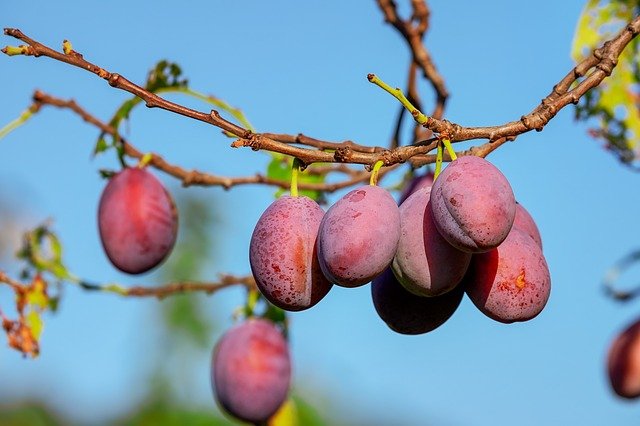
How to use the plum tree for natural dyeing
What parts of the Plum Tree do you use for natural dyeing?
Let’s get back to plum tree and natural dyeing now that all these recipes have left me hungry.
So which parts of the Plum Tree can you use for natural dyeing?
Good news! Pretty much everything.
Remember our post about 5 natural dyeing recipes to become a natural dyer? In it, I explained that you could try your hand at dyeing by reaching first in your kitchen. So, if you want to experiment, you can definitely use the fruits themselves, as long as the flesh is dark red. I don’t really advice for that since it’s a waste of food. In my opinion, it’s better to eat the fruits and use the Plum Tree’s leaves and branches for natural dyeing when it’s pruning season.
I use mostly leaves for my recipe but I like peeling back the small bits of branches to deepen the colour. So let’s take a look together at this natural dyeing recipe with plum tree.
My natural dyeing recipe using Plum tree leaves
For realising a project with plum tree leaves, you will need:
Roughly 100g of plum tree leaves. The idea is to get the same weight for the dyestuff and the items to dye. With leaves, since we are picking them from the ground or when the tree is pruned, I try to add as much as my pot can hold and just add a few small branches too.
A pot large enough for water, plum tree leaves and your wool. Keep this pot for dyeing purposes only, especially if you choose to mordant your fibers and don’t use your dyeing material for cooking.
A sieve but it’s really optional with leaves. I prefer to cover my fibres with the leaves and just have wrap around the fibres as much as possible.
Process for dyeing with plum tree leaves
Remove your fibers from their mordanted bath, gently remove the excess of water (if you don’t know how to mordant, follow the steps on our post about easy recipes to become a natural dyer.)
Fill a big pot with water then add your plum tree leaves.
Heat up the water but don’t let it reach the boiling point.
Let the pot of water and plum tree leaves simmer for 1 hour.
Turn the heat off and let it cool down a bit. It’ll give you richer and deeper colors if you leave it the whole night or at least several hours before straining your dye bath.
Now, it’s time to strain your dye bath. Use your sieve or your hands (with gloves) to strain your plum tree leaves.
Remove your fibers from their mordanted bath, gently remove the excess of water and let them soak all the color up by immersing them in the dye bath.
Heat up the pot slowly again so it can simmer for about 1 hour.
Let it cool down.
Once again it’s better to leaver your fibers several hours or a whole night in the dye bath. This way, the color will only get deeper. You’ll often get a pale beige at first but it should deepen a pretty pale pink if you let it long enough. For my latest dye bath, I ended up using mason jars where I put the yarn and the dye bath with some leaves and let them soak up as much possible for a week. Don’t forget to put the jars into the sun if you’ve good weather.
Once it has cool down, rinse the fibers in cold water, let it dry and brag about your hard work!
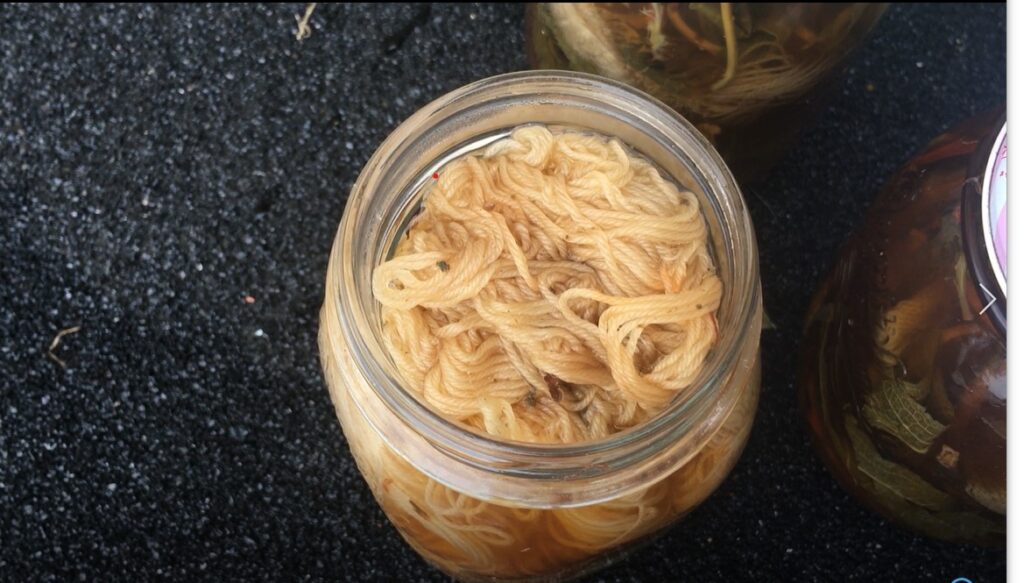
There is a lot of history, mythology and food behind the plum tree and it was very fun to research. We hope you enjoyed it as much as us! To celebrate Spring, we have decided to focus on the Plum Tree for our third natural dyeing embroidery kit in our Seasonal Embroidery Collection.
In it, you will find a special embroidery kit with a spring illustration, a mini-Zine created only for this kit, a skein of vegan thread dyed with plum tree leaves and of course, a pattern representing the different parts of the Plum Tree.
It’s completely beginner friendly and perfect to mark the transition between winter and spring!

